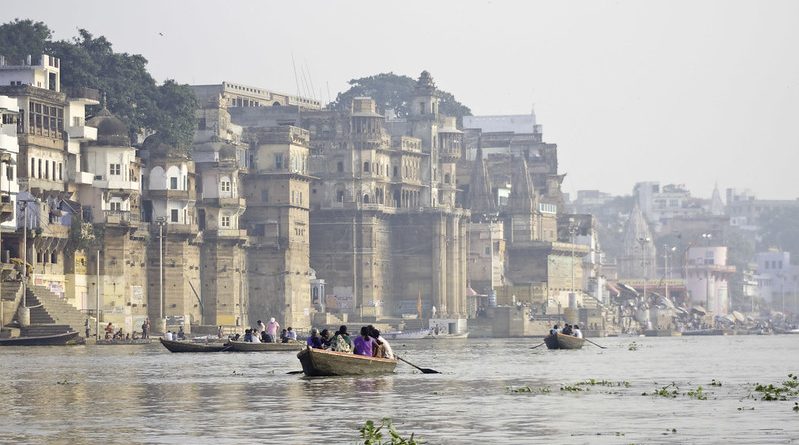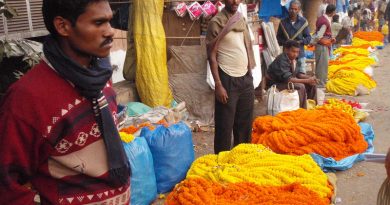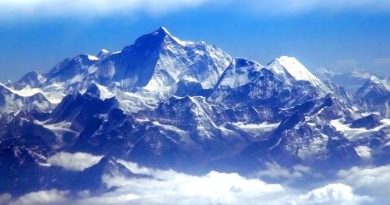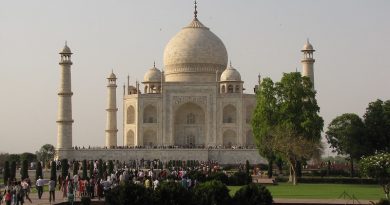The Tricky Tracks of Friendship: India and Nepal
Janakpur – Jaynagar – Allahabad
(please note this map is approximate and not to scale)

A treaty of friendship between the British and Nepal was formed in 1923, acknowledging Nepal as a sovereign independent country. Just five years later, the British constructed a train route between the two countries for the transport of timber. Today it is the most economical means of travel for thousands of passengers. With no passport control between India and Nepal, hundreds of Nepalese migrant workers cross the border every day to escape high unemployment levels.

Photograph of Janki Mandir of Janakpur Dham (Nepal). This photo was taken from the roof of Shah Glass house building by Abhishek Dutta
(adutta.np@gmail.com).
Janakpur is also known as Janakpurdham and is the administrative headquarters of Dhanusa District of the Janakpur Zone. As of 2015 the city had a population of 1,69287. Located about 123 kilometres (76 miles) south-east of Kathmandu, the capital city of Nepal, Janakpur has a substantial tourism industry due to its significance within the Hindu religion.
Jayanagar is a city and notified area, that is, is a settlement which is in transition from rural to urban. It is located in the Madhubani district in the State of Bihar, situated on the holy Kamala River and has road and rail connections to India’s main cities and to Nepal.
Running between Jaynagar in India and Janakpur in Nepal is the Janakpur Railway, a 30 inches (762 mm) narrow-gauge railway. Although it crosses the Nepalese-Indian border and 4 of the 6 trains were gifted by India in 1994, it belongs to Nepal and is the country’s longest, and only railway. The first locomotive was an English steamer named after the Hindu God Vishnu, which began service in 1928.
The only reason this railway line continued to survive and has operated for so long is chiefly down to the trade between the two countries. This is the key importation location on the border between Nepal and India and a lifeline to many Nepalese business people.
In recent years the railway has ground to a halt due to a scarcity of diesel. The company refuses to supply any more on credit and funds at the railway are low. Unemployment has skyrocketed of late and the numbers of migrant workers heading to India have increased.
With no road connecting these two towns, the railway is the most direct route. It’s probably not the quickest though. The 29km journey takes at least 3 hours when everything is going smoothly and has been known to take over 16 hours. Walking would be quicker which presently is the only option for most migrant workers.
The route taken by many Nepalese in search of work takes them down to the thriving city of Allahabad. The largest commercial centre in Uttar Pradesh, Allahabad has been popularly nicknamed “the city of Prime Ministers” due to seven out of India’s thirteen Prime Ministers since its independence either coming from Allahabad or attending Allahabad University. In addition to the city’s economic and political importance, it is also one of India’s spiritual hotspots. As India’s second-oldest city, it plays a pivotal role in the Hindu scriptures and is home to numerous temples and palaces. It is also the junction of the mighty Ganges River, Yamuna River and Saraswati River. Subsequently, Allahabad is a major pilgrimage site for Hindus and is one of the four locations to host the world-famous Kumbh Mela, which in its most recent incarnation attracted over 100 million people over the entire period, making it the largest-ever peaceful gathering of people. The city is also home to a number of important shrines in Hindu culture, including the Daksha Yaga and the Shakti Peethas.
With no need for even a passport, Nepalese people can legally work in India without an official work permit and large communities of workers have settled in Allahabad. Although this has benefits for everyone it often comes along with difficult working conditions. Migrants have become so vulnerable to infection due to uncertainty about their immigration status. While India and Nepal have an open borders policy, there is, however, low awareness of this agreement and as a result many migrants avoid any contact with the state, including health services. There are also cases of human trafficking for the sex trade. Not only are all sex-workers at risk, but Nepalese sex workers are often isolated from peers due to language barriers. Such peer network are important for providing information about prevention.
In recent years there has been a lot of work done to contain a general AIDS epidemic in Nepal with a remarkable turnaround in either decreasing or stabilising the prevalence of HIV among high-risk groups. The main thrust of the approach has been a sound national strategy that is grounded on evidence-based, tailored approaches focussed on targeted interventions for female sex workers, people who inject drugs, men who have sex with men and transgender people, and male labour migrants and their spouses.




